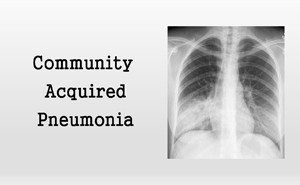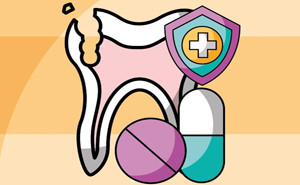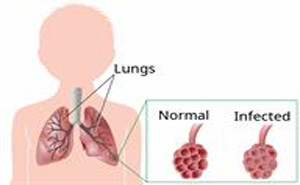Drugs-for-bacterial-infections-anti-bacterial
Antibiotic resistance is one of the greatest public health challenges of
our time—few treatment options exist for people infected with
antibiotic-resistant bacteria.
The Infectious Diseases Society
of America (IDSA) and American Thoracic Society (ATS) issued updated clinical
practice guidelines for community-acquired pneumonia (CAP).Community-acquired pneumonia
(CAP), an infection of the lung parenchyma that occurs in persons outside of a
hospital setting, is associated with high morbidity and mortality.&nb...
Best Practice Advice from the
American College of Physicians
The American
College of Physicians (ACP) and the Centers for Disease Control and Prevention
have recognized antibiotic-resistant infections as a global threat.
Antimicrobial overuse, particularly with broad-spectrum antibiotics, drives
resistance and causes adverse events in u...
JAMA: The Journal of the American Medical Association: October,
2023Cefepime and
piperacillin-tazobactam are commonly administered to hospitalized adults for
empirical treatment of infection. Although piperacillin-tazobactam has been
hypothesized to cause acute kidney injury and cefepime has been hypothesized to
cause neurological dysfunction,...
eClinicalMedicine Journal: The LANCET: Published on December, 2022Gram-negative bacteremia is common
in both community and health care settings, with a significant increase in
incidence described for some Gram-negative bacteria in recent years.Prolonged duration of antibiotic
therapy for such common infections may lead to increased resistance em...
From The Journal of Infectious Diseases and
The British Medical Journal:
Sepsis mortality has improved
following advancements in early recognition and standardized management, including
emphasis on early administration of appropriate antimicrobials. However,
guidance regarding antimicrobial duration in sepsis is surprisingly limited....
Journal of Oral and Maxillofacial Surgery:
Odontogenic infections are a common
problem in dentistry, and their treatment often requires the use of antibiotics
besides the removal of the source of infection, which frequently makes it more
difficult for clinicians to make a decision regarding the choice of antibiotic.
The pathogenesis...
JAMA Surgery:
Surgical
site infections (SSIs) are infections of the incision or organ or space that
occur after surgery. Surgical patients initially seen with more
complex comorbidities and the emergence of antimicrobial-resistant pathogens
increase the cost and challenge of treating SSIs. The prevention of SSI is
increasingly important...
International Journal of Dentistry:
Odontogenic infections are one of
the most prevalent diseases worldwide and the principal reason for seeking
dental care. Dental prescriptions account for nearly 7% to 11% of all common
antibiotic prescriptions.
The commonest emergency odontogenic
infections are periapical abscess (25%), pericoron...
Cesareans
delivery is the most common risk factor for postpartum maternal infections,
which occurs at a rate of 18%–38%. Factors that have been associated with an
increased risk of infection among women who have a cesarean delivery include
emergency cesarean section, labor and its duration, ruptured membranes and the
duration of rupture, t...
Community-acquired pneumonia (CAP)
is a significant cause of respiratory morbidity and mortality in children,
especially in developing countries. Worldwide, CAP is the leading cause of
death in children younger than five years.
Clinical assessment requires
careful evaluation of clinical features, severity, and evidence of
complications....
The British Pharmacological Society Journal: Published: 05 September 2019
Penicillin’s are widely used during
pregnancy for various bacterial infectious indications. Amoxicillin, rapidly
crosses the placenta following absorption to the bloodstream, It is prescribed
both as a sole medicine as well as in combination with clavulanic acid mos...













